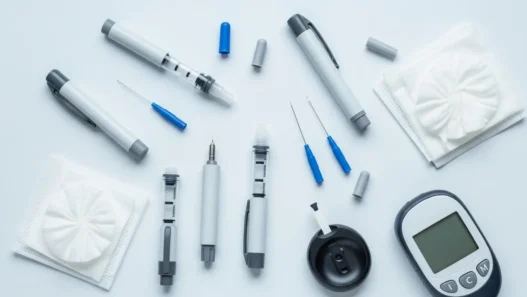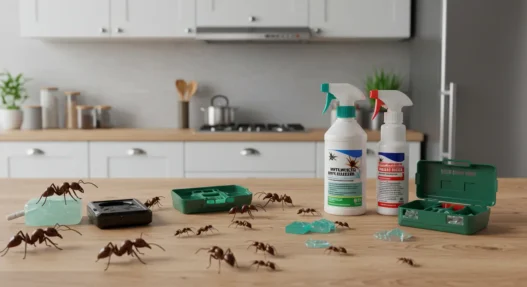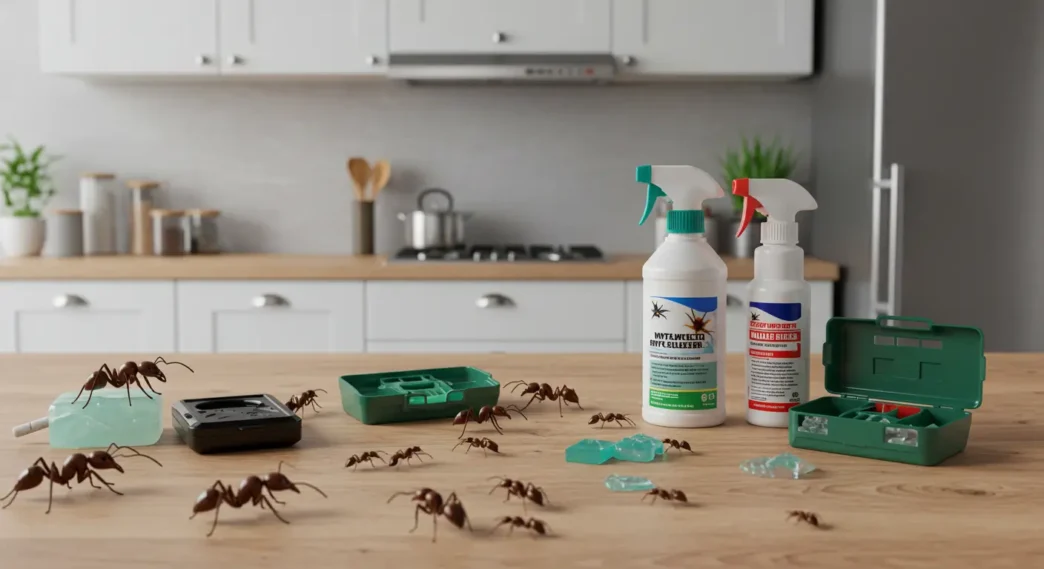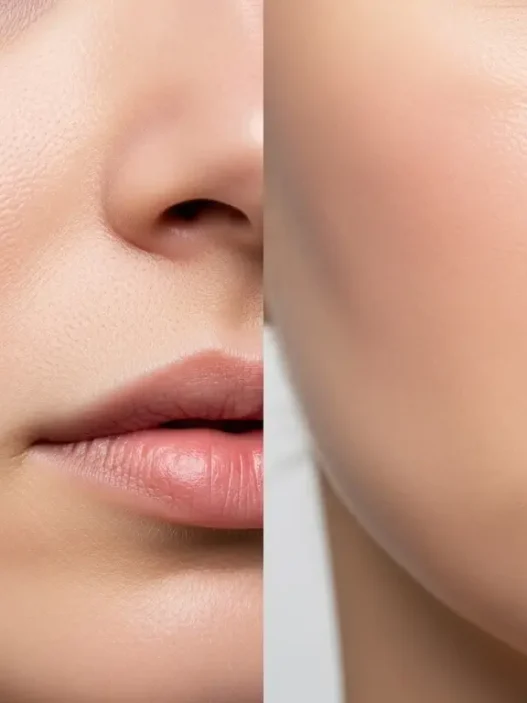Contents
- 1 Best Ant Killers
- 2 Buying Guide
- 3 Frequently Asked Questions
- 3.1 What is the most effective indoor ant killer on the market?
- 3.2 How can I create a homemade ant killer solution?
- 3.3 Which ant killer is safest to use around pets and children?
- 3.4 How do I choose the best ant killer for outdoor use?
- 3.5 Can natural ingredients be used to effectively control ant infestations?
- 3.6 What are the long-term effects of using commercial ant killers on the environment?
Ant killers are products made to control and get rid of ants in and around your home. You’ll find them as sprays, baits, powders, and granules.
These products work by targeting ant colonies. Some kill on contact, while others let worker ants carry poison back to the nest for a bigger effect.
Picking the right ant killer depends on a few things, like the type of ants, where you’ll use it, and safety needs. Sprays give quick results but might not reach the nest, while baits take longer but can wipe out the whole colony.
Toxicity is a big deal—especially if you’ve got pets or kids—since some of these can be dangerous if eaten. Always double-check the label before you start spraying or spreading stuff around.
Best Ant Killers
We’ve tried out and reviewed several ant killers to help you find what actually works. Our picks are safe, easy to use, and get rid of ants fast.
Use this guide to pick the ant killer that fits your situation, whether you’re facing a few scouts or a full-blown invasion.
TERRO Ant Killer Bait Stations
We found this ant killer works really well indoors since it goes after the whole colony, not just the ants you spot crawling around.
Pros
- Attracts ants quickly with a sweet liquid bait
- Kills hidden ants by sharing poison in the colony
- Easy to place and ready to use right out of the box
Cons
- Takes up to two weeks for full control
- Needs regular checking to make sure bait doesn’t dry out
- Some ants may ignore traps if placed poorly
We set these bait stations near baseboards and counters, and the ants found them within a few hours. After a few days, there were way fewer ants wandering around.
The liquid bait stayed fresh for quite a while, but we had to check now and then to make sure it hadn’t dried up. You do need some patience, since the poison needs time to spread through the colony.
Honestly, it’s a solid pick for indoor ant issues and doesn’t need any mixing or fuss. Place it where you see the most ants for the best shot at wiping them out.
Terro Ant Killer Plus
This granule ant killer is solid for outdoor use and stops ants (plus other bugs) fast. It’s simple to apply, which is always a plus.
Pros
- Kills many types of insects quickly
- Convenient shaker bag makes spreading simple
- Can be used on lawns and around house edges
Cons
- Only for outdoor use
- Needs watering after application
- Some results take a day or two to show
We used this on fire ants and regular ants in the yard. The resealable shaker bag made it easy to put granules exactly where we wanted—no mess, no extra tools.
We spread it around the house as a perimeter. It’s important to water the granules soon after, or they won’t work as well. Bugs started dying off within about a day.
This is a handy, low-effort ant killer for outside, especially for bigger infestations. Just don’t use it indoors, and give it a little time to work its magic.
Ruiot Museum Exhibit Gel
This gel is great for keeping fragile stuff in place without causing damage, but it really only shines on flat, horizontal surfaces and in cooler rooms.
Pros
- Clears well without covering details
- Reusable and leaves no sticky residue
- Safe for pets and family, with no strong smell
Cons
- Not effective on warm surfaces, can get soft
- Only works on horizontal, flat surfaces
- May struggle with very small or light items
We used this gel for antiques, vases, and little collectibles. It holds things tight without hiding them and peels off cleanly—no sticky mess left behind.
It’s not a glue, so it won’t damage shelves or tables. The non-toxic formula is nice if you’ve got curious pets or kids around.
It’s not great for hanging items or anything on uneven surfaces. Warm rooms can make it too soft, so best to stick with cool spots. For shelves and display cases, though, it’s super handy.
Amdro Outdoor Ant Killer
This ant killer is a go-to for protecting outdoor spaces by going after whole colonies before they sneak inside.
Pros
- Kills many common ant types
- Lasts up to three months
- Easy to apply around the home perimeter
Cons
- Not effective in wet or cold conditions
- Needs reapplication after heavy rain
- Works slower in cooler weather
With Amdro, we saw fewer ants after about a week. The granules attract worker ants, who drag the bait back to the colony and help knock out the whole nest.
It’s easy to sprinkle around the yard or along the foundation. It worked best for us in hot weather, but not so much if it rained right after application.
After heavy rain, we had to reapply, but in between, it kept the ants away for months. If you stick to the directions, it’s a reliable outdoor ant solution.
Terro Outdoor Ant Baits
These bait stakes are handy for cutting down ant colonies outdoors, before they make it inside.
Pros
- Easy to set up and use in the yard
- Targets ant colonies, not just visible ants
- Weatherproof design holds up outside
Cons
- Stakes can be hard to insert in rocky soil
- Plastic units sometimes tip over
- Bait amount runs out faster in heavy infestations
We stuck these near ant trails, and the ants found the bait fast. Soon after, there were fewer ants around the house.
It was clear the ants were taking the poison back to their nests, since the problem started to fade quickly. No mess, no sprays—just quiet results.
The stake design could use some tweaks. It tipped over in loose dirt and was tough to push into hard ground, but the weatherproof case kept the bait working even after rain.
Overall, using these outside gave us good control of ants at the edge of our home. They’re a strong pick for stopping ants before they get inside.
Buying Guide
When picking an ant killer, we look for a few key features. These help us find something that works and doesn’t cause extra headaches.
First, there’s the type of ant killer. Sprays, baits, powders, and liquids all work differently. Sprays act fast but might miss the nest, while baits lure ants to carry poison home for a bigger hit.
Then, we check the active ingredients. Things like boric acid, hydramethylnon, and fipronil each kill ants in their own way. We lean toward safer options if there are pets or kids in the house.
Where you’ll use the product matters too. Indoor ant killers should be low-odor and safe for homes. Outdoor ones usually cover more ground and can handle tougher bugs.
Ease of use counts for a lot. Some need mixing, others are ready to go. We’re fans of simple application methods that fit our routines.
| Feature | What to Consider |
|---|---|
| Type | Spray, bait, powder, or liquid |
| Active ingredients | Safety for pets and children |
| Usage location | Indoor or outdoor |
| Application method | Ready to use or needs mixing |
Frequently Asked Questions
We focus on products that actually work indoors and outdoors, safe picks for homes with pets and kids, and some natural options too. Environmental impact is something we try to keep in mind.
What is the most effective indoor ant killer on the market?
Gel baits with boric acid or fipronil usually work best indoors. These attract ants and take out the whole colony over time.
How can I create a homemade ant killer solution?
Try mixing equal parts water and white vinegar, then spray it on any ant trails you spot. If you want something a bit stronger, a blend of borax, sugar, and water can lure ants in and take care of the problem pretty quickly.
Which ant killer is safest to use around pets and children?
Honestly, ant baits with boric acid are a solid choice since they’re less toxic—just make sure to tuck them somewhere pets or kids can’t get to. Always double-check those product labels, and keep all insecticides sealed up tight.
How do I choose the best ant killer for outdoor use?
For outside, go for products made to handle anthills or create a barrier around your place. Granules or sprays with ingredients like bifenthrin or permethrin are usually pretty effective.
Can natural ingredients be used to effectively control ant infestations?
Natural options like diatomaceous earth, peppermint oil, and vinegar can actually help with ants. They’re best for smaller problems or as part of a bigger plan to keep ants away in the first place.
What are the long-term effects of using commercial ant killers on the environment?
Many commercial ant killers use chemicals that don’t just target ants—they can harm beneficial insects, too. That’s a problem for soil health, which relies on those good bugs.
If you keep using these products, there’s another risk. Chemicals can run off into nearby waterways and mess with water quality.






















